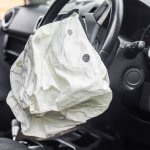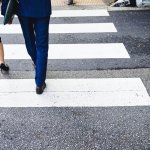Avoiding Accidents in the Fog
There are wonderful benefits to living so near the water in Acadiana: boating, seafood, maritime industry, to name a few. However, the combination of water and certain weather conditions can pose an extremely hazardous risk.
Fog. Pea-soup-thick. It reduces visibility for motorists, boaters on waterways and aircraft pilots. The personal injury team at Joseph Joy and Associates has litigated many car and boating accidents in which fog was a factor. Never ignore the perils of fog in South Louisiana.
Louisiana has had its own host of fog-related accidents, like the tragic plane crash in Lafayette which took the lives of 5 people one foggy morning last year.
Most roads and highways where foggy conditions are common utilize a fog warning system, but some roadways have additional best-case procedures put in place for foggy conditions. One of the worst traffic accidents in American history was caused, in part, by a “fog so thick you could move it with your hand.” That accident on December 11, 1990 on I-75 in Tennessee involved 99 vehicles including cars, pickups, and 18-wheelers. It left 42 people injured, and 12 people dead.
As a result, new technology has been developed to assist drivers in foggy conditions, but none of it can fully replace the knowledge of safe driving practices for driving in low-visibility conditions.
-
- Slow down and allow extra time to reach your destination.
- Make your vehicle visible to others both ahead of you and behind you by using your low-beam headlights since this means your taillights will also be on. Use fog lights if you have them.
- Never use your high-beam lights. Using high beam lights causes glare, making it more difficult for you to see what’s ahead of you on the road.
- Leave plenty of distance between you and the vehicle in front of you to account for sudden stops or changes in the traffic pattern.To ensure you are staying in the proper lane, follow the lines on the road with your eyes.
- In extremely dense fog where visibility is near zero, the best course of action is to first turn on your hazard lights, then simply pull into a safe location such as a parking lot of a local business and stop.
- If there is no parking lot or driveway to pull into, pull your vehicle off to the side of the road as far as possible. Once you come to a stop, turn off all lights except your hazard flashing lights, set the emergency brake, and take your foot off of the brake pedal to be sure the tail lights are not illuminated so that other drivers don’t mistakenly run into you.
- Stay close enough to the vehicle in front of you to see its taillights, but don’t follow too closely.The use of high-beams is particularly discouraged as they can scatter more light back towards your vehicle, and further reduce your visibility. The most important tip available may be to take extra caution when following another vehicle— having less time to stop is one of the reasons that pileups and rear-end accidents occur.
If you are boating and encounter dense fog, it is imperative you take safety precautions.
Learning to navigate through fog (or avoiding it) is critical to safe boating. These safety tips will help keep you safe:
-
- Slow down to avoid collisions.
- Turn on all of your running lights, even in daytime.
- Listen for sounds of other boats that may be near you or for fog horns and bells from nearby buoys.
- VHF NOAA Weather Radio should broadcast important information concerning the formation, movement or dissipation of the fog. Pay close attention.
- If your vessel has radar, use it to help locate dangers that may be around you. Use GPS or a navigation chart to help obtain a fix on your location.
- If you are unable to get your bearings, stay put until the fog lifts but make sure you are in a safe location.
- Be familiar with horn and bell sounds you should produce to warn others around you when in dense fog.
- Have a compass available. Even if you don’t know where you are in the fog, with a compass you can determine the direction you are navigating.
Sometimes, being aware of best practices for driving, boating or flying in the fog isn’t enough to keep yourself safe from an accident. Unfortunately, there are other operators who are either unskilled or negligent and cause accidents with injury. If you’ve been in an accident with injury in low-visibility conditions, due to someone else’s negligence, contact us at Joseph Joy and Associates in Lafayette and we’ll assess your case. Call us at (337) 232-8123 for an appointment.




